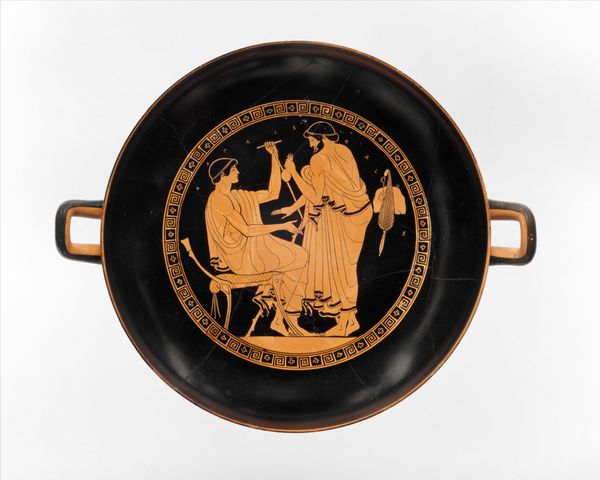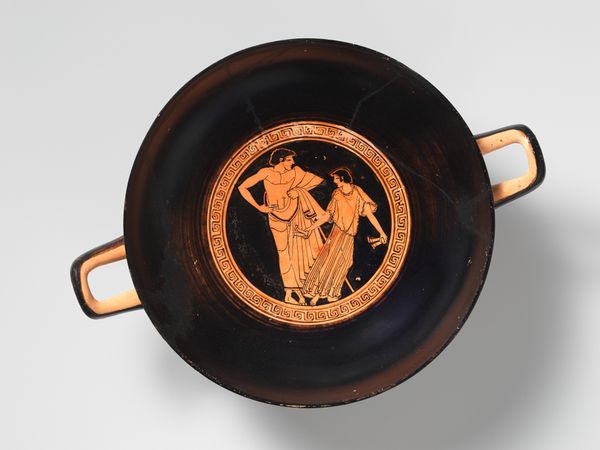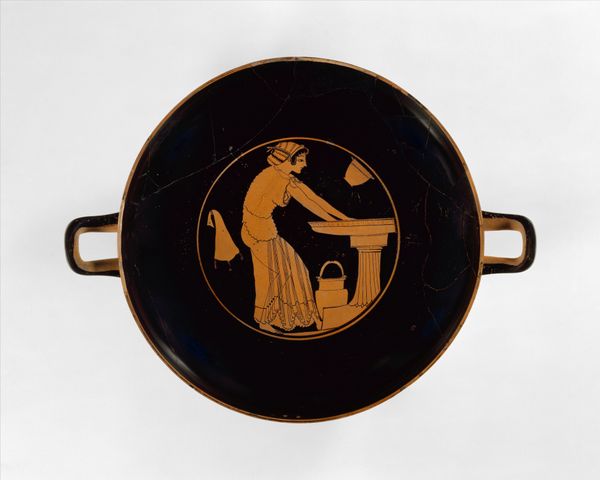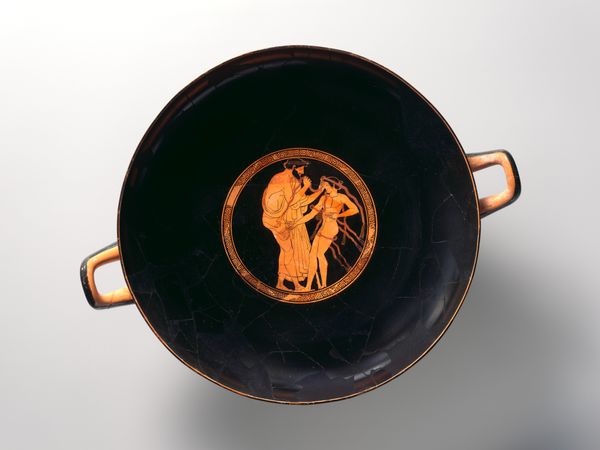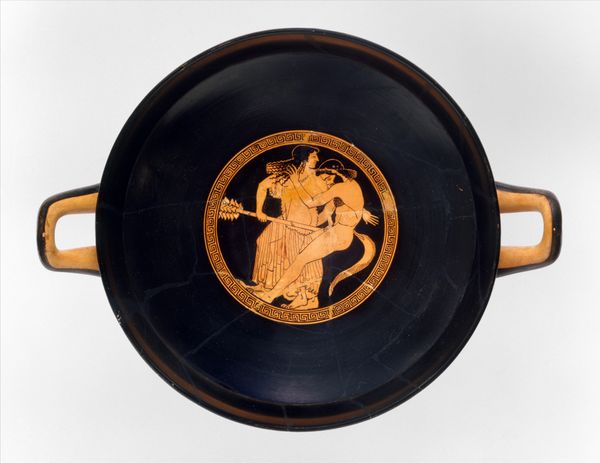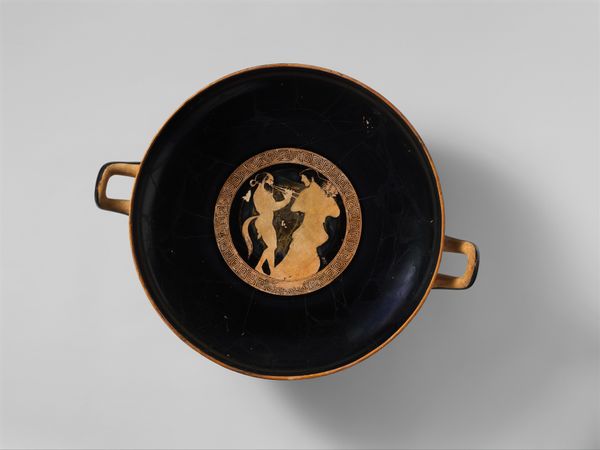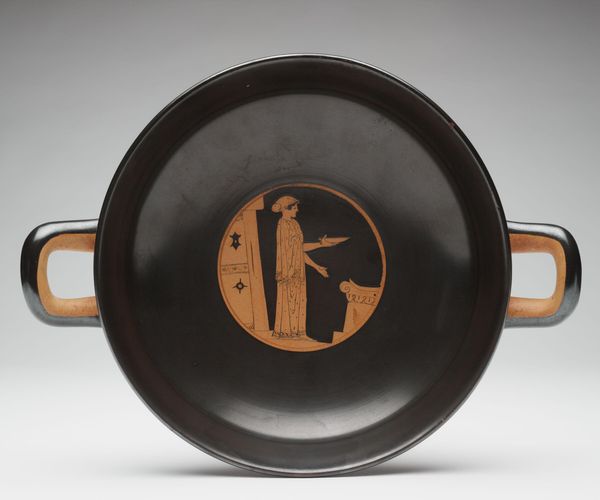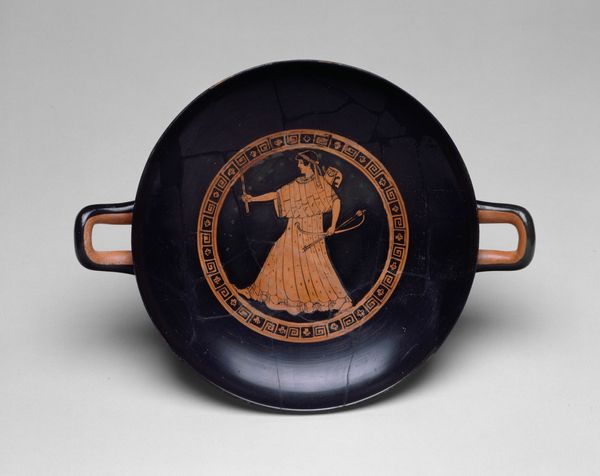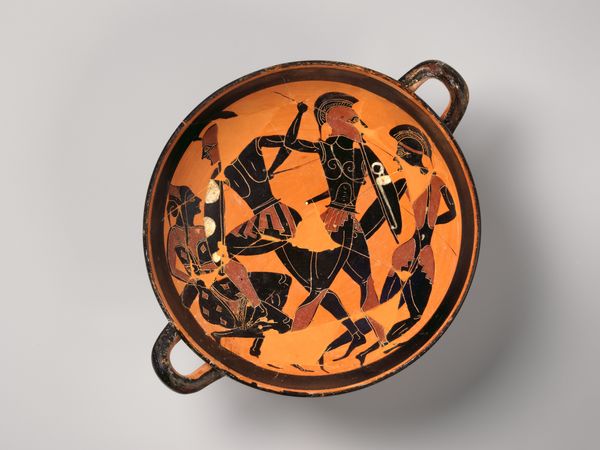
drawing, ceramic
#
drawing
#
greek-and-roman-art
#
ceramic
#
figuration
#
ancient-mediterranean
Dimensions: H. 2 3/8 in. (6.1 cm)
Copyright: Public Domain
Editor: So this is a terracotta kylix, or drinking cup, made around 510 BC, and currently held at the Metropolitan Museum of Art. It's attributed to Epiktetos, and the interior figure is striking! It has this lovely circular composition with a figure holding a wine vessel. How would you interpret the figure's pose, and the broader purpose of this form within its historical context? Curator: The image inside the kylix, the symposium, can be thought of as the space for negotiation of male, Athenian, citizen identity. Only certain free people were allowed into this ritual act of gathering, drinking, sharing poetry, philosophical discussions and eroticism. It excluded enslaved peoples and women, barring a select few hetairai, educated female companions who offered intellectual exchange. Can we therefore think of it as something exclusionary, setting the bar of personhood and humanity quite high? Editor: That's interesting; I never considered it that way before. What do you mean by "setting the bar?" Curator: I mean to ask, by excluding specific identities, does this kylix communicate the importance of only *certain* people? What does it mean to perform the act of personhood, according to Ancient Greek society? This beautiful cup acts as both a functional piece and a strong symbol that has implications within an ethical framework of human beings and citizenhood. Editor: Wow. I guess I had always looked at Greek art as just beautiful forms and stories of gods and heroes, but thinking about who was excluded from those stories definitely changes things. So much about the formation of identities, so deeply rooted in history. Curator: Exactly! By understanding the function and significance of these artworks, and reflecting on *who* got to participate and benefit from their cultural caché, we're prompted to think more deeply about ethics and our shared humanity. Editor: Thank you so much, this insight has certainly opened a new lens through which I’ll view art history from now on. Curator: My pleasure. This discussion is a testament to how art acts as an artifact capable of initiating cultural shifts, starting with shifts in perspectives.
Comments
No comments
Be the first to comment and join the conversation on the ultimate creative platform.

